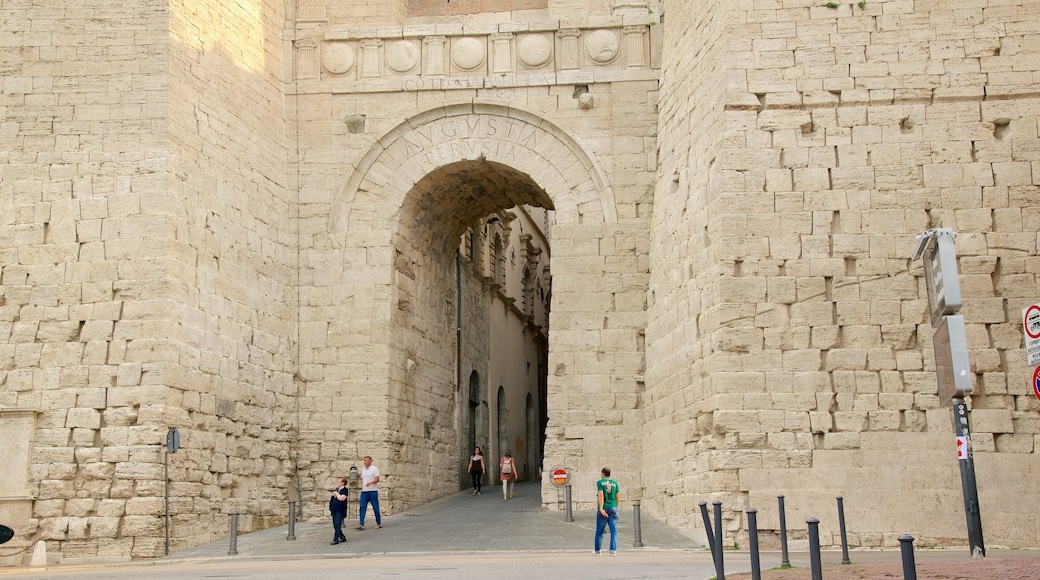The formidable Arco Etrusco (Etruscan Arch) was one of seven entrance gates leading into the ancient walled city of Perugia. It is also the only remaining one that has been carefully preserved over the centuries. Venture to the gate to see history come to life as you try to decipher the stories of the city’s past through its inscriptions.
The vast Arco Etrusco dates to the 3rd century B.C., during the Etruscan period in Perugia. The arch was originally part of the great city walls. Approach the gate and look up to the top of the high rounded arch where you will see an inscription which reads “AUGUSTA PERUSIA.” This was inscribed to commemorate the war of 40 B.C., which lasted for several months and was led by the Roman Emperor Augustus, along with legendary general Mark Antony. The war ultimately saw Perugia submit to the Roman Empire. It is for this reason that the Arco Etrusco is often referred to as the Arco di Augusto (Augustus Arch).
Look closely and you will spot a second inscription above the arch, which reads “COLONIA VIBIA.” This commemorates the emperor Vibius Trebonianus Gallo, who awarded Perugia the status of colony. Imagine a time when armored Romans marched these cobbled streets.
Notice the shape of the arch and its turrets. There are two trapezoidal turrets and a façade which contains the great arch. The heads of ancient gods have been carved into the vast blocks which stand on either side, and these were once believed to protect the city. Above the arch, along with the inscriptions, is a frieze with a circular shield. Look to the left of the buttress, where you will see a lovely 17th-century fountain.
The Arco Etrusco is located in the heart of Perugia’s old city and located near the grand Palazzo Gallenga Stuart, which is today a university for foreign students. Find Corso Vannucci, the city’s main street, then walk up Ulisse Rocchi street until you reach the gate.

